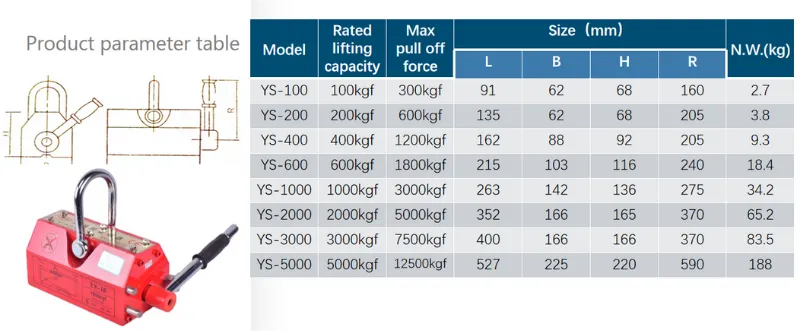Understanding Overhead and Gantry Cranes for Efficient Industrial Applications and Operations
Understanding Overhead and Gantry Cranes An Overview
Overhead and gantry cranes are vital components of material handling technology, widely used in industries such as manufacturing, construction, and shipping. These cranes play a crucial role in lifting and transporting heavy loads horizontally, significantly enhancing productivity and safety in various applications. This article explores the types, functions, advantages, and maintenance of these cranes, providing a comprehensive overview for industry professionals.
Types of Cranes
Overhead cranes are typically mounted on beams or tracks, allowing for lateral movement across a designated space. They consist of two main parts the bridge, which spans the workspace, and the hoist, which can move vertically and horizontally to lift loads. There are different variations of overhead cranes, including
1. Top Running Cranes These cranes run on top of the rails, providing increased lifting capacity and coverage of large spaces. 2. Under Running Cranes Also known as bridge cranes, these are mounted from the bottom of the rail, offering unique benefits in low-profile applications. 3. Monorail Cranes This type features a single rail, providing a streamlined design suitable for tight spaces.
On the other hand, gantry cranes are characterized by their A-frame structure that supports a bridge that moves along with the load. This type of crane can either be fixed or mobile, making it versatile for different operational needs. Gantry cranes are further categorized into
1. Full Gantry Cranes These cranes have legs that run along a track, allowing for both lateral and longitudinal movement. 2. Semi-Gantry Cranes These are similar to full gantry cranes but have one side supported by an overhead track, providing a unique design for specific tasks.
Functions of Overhead and Gantry Cranes
The primary function of overhead and gantry cranes is to facilitate the movement of heavy materials that cannot be handled manually. Their design allows for precise lifting and lowering, making them ideal for tasks such as assembly, manufacturing, and shipping. With the capability to lift loads at significant heights and move them horizontally, these cranes streamline workflows and enhance productivity.
In manufacturing plants, for example, overhead cranes are used to position large components during assembly lines or machinery installation
. In a shipping yard, gantry cranes are employed to load and unload containers from ships or trucks, reducing turnaround time and increasing operational efficiency.overhead and gantry cranes

Advantages
The benefits of utilizing overhead and gantry cranes are substantial. First and foremost, they significantly reduce the risk of injury associated with manual lifting of heavy objects. This enhancement in worker safety is critical in industries where heavy lifting is common.
Moreover, these cranes maximize the use of vertical space in a warehouse or manufacturing floor while allowing for improved organization of materials. As they can efficiently move loads from one location to another, they contribute to smoother workflows and reduced downtime.
Cost-effectiveness is another advantage. While the initial investment in overhead or gantry cranes may be considerable, their longevity, durability, and efficiency in handling materials contribute to lower operational costs over time.
Maintenance Considerations
To ensure the longevity and operational safety of overhead and gantry cranes, regular maintenance is essential. This includes
1. Routine Inspections Checking components such as the hoist, suspension, and controls for wear and damage. 2. Lubrication Keeping moving parts well-lubricated to prevent friction and wear. 3. Load Testing Periodically testing the crane under load to ensure it functions correctly and safely.
Establishing a maintenance schedule and adhering to it not only prolongs the life of the cranes but also safeguards the safety of the workers operating them.
Conclusion
Overhead and gantry cranes are indispensable in modern industrial settings, providing efficient solutions for heavy lifting and transporting tasks. Their versatility, safety advantages, and economic efficiency make them essential tools for enhancing productivity in various sectors. Understanding their types, applications, and maintenance can help industry professionals maximize the benefits these cranes offer, ensuring smoother operations and a safer work environment.
-
Unlock Seamless Relocation with Our Heavy Equipment Moving ExpertiseNewsJun.06,2025
-
Unleash Unrivaled Flexibility with Our Adjustable Gantry CraneNewsJun.06,2025
-
Unleash Heavy-Duty Efficiency with Our Industrial Gantry Crane SolutionsNewsJun.06,2025
-
Revolutionize Steel Handling with Our Magnetic Lifter RangeNewsJun.06,2025
-
Master Equipment Mobility with Premium Machinery Mover SolutionsNewsJun.06,2025
-
Elevate Your Material Handling with Magnetic Lifter TechnologyNewsJun.06,2025
-
YS Permanent Lifting Magnets: The Smarter Way to Handle SteelNewsMay.22,2025
